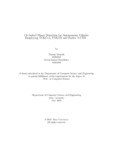Lessons learned from COVID-19 for a blended language learning model: tertiary level students’ preferences for online synchronous and asynchronous learning
Abstract
Education during the pandemic was challenging at many levels, but amidst the crisis, educational administrators worked hard in implementing a curriculum which is quite heavily reliant on computer-assisted language learning (CALL) techniques like online assignment writing, submissions, and feedback. The fact that, to an extent, Bangladesh has been able to transition to large-scale online learning has now opened several opportunities for the future. However, with COVID-19 receding today, there is a need to evaluate exactly which technologies and strategies used during the pandemic are well-served to stand the test of time and become a part and parcel of a hybrid (blending online and offline) learning model. In light of this, the purpose of this study is to draw out the positive aspects of online education—in both synchronous and asynchronous modes—specifically tertiary level language teacher trainees in Bangladesh. Therefore, this study investigated the lessons learned due to COVID-19 from the lens of blended learning with the use of Chaeruman et al.’s (2018) theoretical framework. In this regard, the study adopted a qualitative research approach while interviewing tertiary level students of Bangladesh via both individual semi-structured interviews as well as focus group discussions. Snowball and purposive sampling techniques were used, and data analysis involved thematic analysis of semi-structured interviews. It was found that both synchronous online learning elements—namely, live online classes, Zoom, Google Meet, breakout rooms, and the share screen option—and asynchronous online learning elements—namely, recorded lecture videos, discussion forums, and LMS—were perceived to be important lessons taught to Bangladeshi tertiary level learners during COVID-19. If some of these online synchronous and asynchronous elements can be incorporated into the tertiary level curriculum of Bangladesh, then a blended learning scenario built from the groundwork of the crisis learning during COVID-19 may manifest.
Keywords
Blended learning; Hybrid learning; Online synchronous learning; Online asynchronous learningDescription
This thesis report is submitted in partial fulfillment of the requirements for the degree of Masters of Arts in Teaching to Speakers of Other Languages, 2022.Department
Department of English and Humanities, Brac UniversityType
ThesisCollections
- Thesis, M.A. (English) [138]
Related items
Showing items related by title, author, creator and subject.
-
A study on the similarities and differences in learning styles between English medium and Bengali medium learners
Tuli, Tahmina (BRAC University, 2015-12)The purpose of this study was to find out the similarities and differences in learning styles between English medium and Bengali medium learners. This study attempted to find whether the learning styles of Bengali medium ... -
Occluded object detection for autonomous vehicles employing YOLOv5, YOLOX and Faster R-CNN
Mostafa, Tanzim; Chowdhury, Sartaj Jamal (Brac University, 2022-05)Autonomous vehicles [AVs] are the future of transportation and they are likely to bring countless benefits compared to human-operated driving. However, there are still a lot of advances yet to be made before these vehicles ... -
Comprehensive fingerprint recognition utilizing one shot learning with Siamese Network
Zaman, Sara Milham; Hasan, Md. Abir; Sadat, Md. Rafid; Haque, Md. Abrar (Brac University, 2023-01)Detailed Fingerprint investigation has been a dominant law enforcement tool which is utilized to distinguish suspects, settle crimes and violations for over 100 years. Moreover, gender classification from fingerprints ...




